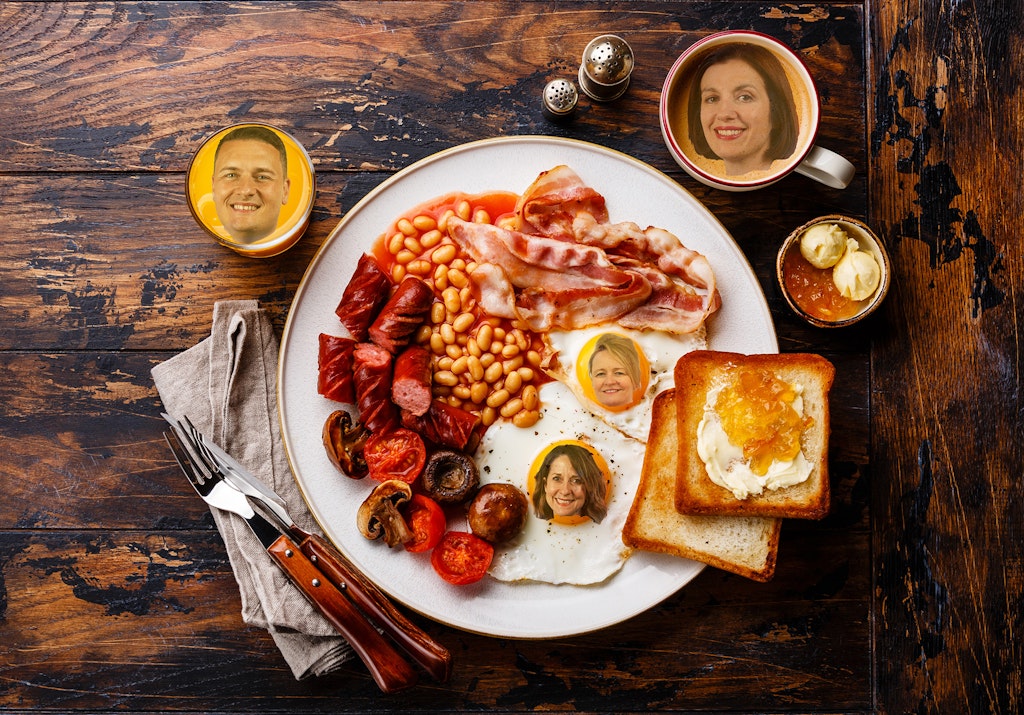Art in Paris under Covid
Mark Le Fanu goes to the Musée Nissim de Camondo, the Marmottan, and the Musée Antoine Bourdelle
Along with the Louvre and the Musée D’Orsay, the smaller museums of Paris have slowly been re-opening their doors. I’ve recently come back from visits to three of the more atmospheric of these places, the Musée Nissim de Camondo, the Marmottan, and the Musée Antoine Bourdelle. The last-named (a museum of sculpture) is situated on the Left Bank, in the heart of Montparnasse. The other two are on the Right Bank and housed in hyper-elegant mansions whose architecture and period detail furnish a strong part of the inducement to go there.
The discreeter and more private of the Right Bank pair, the Camondo, can be found on a street overlooking the beautiful Parc Monceau in the 8th arrondissement. Its interior breathes an atmosphere of pure Louis Quinze, the legacy of its founder, a fabulously wealthy banker and aesthete named Count Moise de Camondo (1860-1935) whose father Nissim together with an uncle, Isaac, had moved to Paris in the late 19th century from Constantinople, where this Sephardic Jewish family had prospered for many years in the service of the Sublime Porte.
The tall square reception rooms of the Marmottan on the other hand (the museum is situated in Passy, near the Bois de Boulogne in a mansion built by the duc de Valmy) are distinctly Napoleonic in flavour, furnished in impeccable Empire taste, with the difference that, along with their several Davids and Gericaults, the walls are sprinkled with fine Impressionist paintings (Renoir, Degas, Caillebotte, Berthe Morisot), the legacy of a gift from the 1950s, long after the house and its contents had been acquired by the Marmottan family and given over to its current museum use. Downstairs, in a separate basement annexe, lies what is probably this museum’s main attraction, a magnificently expansive and well-displayed collection of late Monet canvases painted in the master’s gardens at Giverny (probably the best single collection of his works in the world). In addition to all this, it possesses a separate dedicated exhibition space, currently given over to a fascinating exploration of Paul Cezanne’s links with Italy.
That connection turns out to have been virtual rather than actual: astonishingly enough, Cezanne never visited the country in his lifetime. But from the beginning of his career he harboured a lifelong passion for the achievements of the southern Old Masters, whose canvases he knew from illustrations and from regular museum visits. Most of these painters were baroque, the majority of them indigenous to the Italian peninsula (Tintoretto, Bassano, Reni, Giordano etc) but in one or two crucial cases (El Greco, Poussin, Ribera) foreigners residing in Rome or Naples for long periods. Cezanne himself, of course, came from Provence, and there is much play given to the idea that the ‘Mediterranean’ light of the south of France is identical to that of Italy, which may well be so, yet the essential affinity of soul lies elsewhere, in the charged emotion which both Cezanne and the Italians managed to distil out of their representation of the human body in extremis.
Thus, for example, the expansive and extravagant gestures that are typical of baroque art, and observable in classic religious tableaux, find themselves echoed, in early Cezanne, in his predilection for violently-conceived subject matter, packed with emotion, and painted for the most part (like the 16th and 17th century Italian canvases) in dark, lurid tones wholly different from his later chromaticism. It was fascinating to see in the exhibition the extended arm movements of the grief-stricken figures spread out at the foot of the Cross in Tintoretto’s Déploration du Christ (1580: Musée des Beaux-Arts, Nancy) duplicated in the vivid melodrama of the canvas next to it, Cezanne’s The Murder (1870: lent by Liverpool’s Walker Art Gallery), which shows a woman pressing down on the body of a solitary wayfarer while, against a background of louring storm-clouds, her male companion stabs the poor fellow to death. The arms of the victim here are stretched out in exactly the same pose as the arms of Christ in Tintoretto’s painting: Cezanne seems clearly to have studied the latter. The subject matter of the two paintings couldn’t of course be more different. But the exhibition, by clever juxtapositions like these, succeeds again and again in establishing authority for the salience of such visual correspondences.
Returning to the Musée Nissim de Camondo: the one historical style of painting for which Cezanne seems to have had no affinity at all, is French rococo: the period of Louis XV. The banker Moise de Camondo was obsessed with it, and not only the paintings but the furniture, the silverware, the porcelain and even the panelling of the individual reception rooms all date back to this epoch, just prior to the French Revolution. The treasures on display, the visitor is led to believe, are the result of a lifetime of patient collecting at the expense of practically any other interest – even the running of his bank, which he closed down in 1911. That same year, Moise had the original mansion he had inherited destroyed, before building an even larger one on the same spot in collaboration with the architect René Sergent: still in the classical mould, but furnished, this time round, with the newest luxury mod-cons – bathrooms, butler’s pantries, the latest kitchen implements etc, all of them positioned to be discreetly out of the way of the ex-banker’s guests, but in fact just as much a marvel, to modern visitors, as the fabulous Louis Quinze décor of the main reception rooms.
I visited the museum on a beautiful summer’s day after an earlier stroll in the next door Parc Monceau, whose heavy-foliaged trees and art-nouveau statuary in praise of the famous turn the district into what must surely be one of the most charming spots in the whole of Paris. The museum, as I said, abuts the park, and the tall windows of the building’s ground-floor rooms look out therefore onto enticing vistas of greenery. Yet the atmosphere, for the visitor, is not without a certain tinge of melancholy. The Count, like many aesthetes, was a man radically out of step with his time: it seems he would genuinely have preferred to have been born in the 18th century. There is, perhaps, a price to be paid for preferring the world of historical objets to the pleasures of human company, the name of that forfeit being loneliness. There aren’t many visitors now, and the feeling is that there probably weren’t many then, in the heyday of the mansion’s prosperity. Moise divorced his wife in 1897 after discovering her affair with the estate’s stable master; while his only son Nissim (after whom the museum is named), a lieutenant with the French air force, was shot down and killed in battle in 1917.
There was not much joy to be had after this. To bring the story to its fearful end quickly: his second child Beatrice (to whom the mansion was bequeathed after the death of Moise in 1935), having taken the risk of staying on in Paris, was deported to Auschwitz in 1943, perishing there with her children, Fanny and Bertrand. Isaac (Moise’s uncle) had, alas, produced no children of his own, so the Camondo name died with them.
* * * * *
The area round the Parc Monceau, as I have said, is, architecturally, one of the most beautiful in Paris. But that only reminds one how consistently beautiful is the whole of this wonderful city. The tree-lined Hausmannian boulevard, its seven-storeyed buildings constructed in pale honey-coloured stone, and decorated with austere wrought-iron balconies, is to my mind one of the greatest-ever inventions of urban planning, combining as it does classical harmony and regularity of form with the ability to encompass an infinite variety of sculpted-stone ornament around doorways, windows and balustrades. If we are not to count the 17th century monuments that ‘define’ Paris architecturally (the Louvre, the Académie Française, the Invalides and so on), the great period seems to me to be 1890-1914, when the classical Hausmannian template effloresced into a riot of bow windows and art-nouveau stone carving.
That is the norm, you could say, in the late 19th century bourgeois districts such as Passy and the Champs de Mars. But in fact there were a number of competing architectures in this period, especially in the further away arrondissements, including a number based on iron-work and brick. The artists’ studios in and around 14th arrondissement Montparnasse, for example, which sprang up in the late 19th and early 20th centuries, furnish lively examples of such eclectic and artisanal building materials, in the service of more or less bohemian life-styles. In one of these massive brick-fronted sheds situated in a modern side street overlooked by the hideous Tour Montparnasse (at 47 storeys, the tallest building in central Paris, and a permanent eyesore) we come upon a third and last museum I’ve recently visited, dedicated to the work of the sculptor Antoine Bourdelle (1861-1929).
The building first: yes, it is brick-fronted; but a few paces beyond the entrance the façade gives way to elegant wrought iron railings behind which can be glimpsed a spacious shady garden harbouring examples of the sculptor’s monumental work in bronze: horses, centaurs, male and female allegorical figures of all sorts – we are plainly here in the epoch of high Symbolism. Inside the compound itself, and behind the lofty gallery that contains an initial, panoramic display of the artist’s works in plaster, there is yet another, inner garden: long and sinuous and even more mysteriously enticing than the first one. Here the visitor trips up over the sheer scale of Bourdelle’s enterprise. Among ‘finds’ in this garden: a twenty-foot equestrian statue of the Argentinian liberator Alvear that has managed to get entwined in a fig tree (the original, apparently, still stands – unless it itself has been recently ‘liberated’ – on a fourteen metre plinth in the centre of Buenos Aires). Just as massive, a six-metre tall Virgin in stone holds up the Holy Child for blessing: she is taller than Michelangelo’s David. Sundry other statues of equal height and girth complete the scene, while surrounding this leafy space, and giving it something of the feeling of a cloister, the Pritzker prize-winning architect Christian de Portzamparc has constructed a series of adjoining rooms which the visitor may walk through, enjoying eye-to-eye contact with the artist’s more medium-scale work.
Scale, in sculpture, isn’t everything of course; but it’s something. The main pleasure however, for me, is that here we are still in contact with figurative art, and with sculpture that makes sense. Bourdelle was a pupil of Rodin and later on the teacher of Giacometti. His vision would seem to occupy therefore a fascinating in-between space, looking back to the ancients and at the same time forward towards Modernism and abstraction. Humans, in his art, have not yet been divorced from the gods. Heroism still makes sense (as we see from his impressive work on war memorials). As with Rodin, there is a real sense of the erotic in his work. If you go to this museum, don’t miss leafing through the collection’s catalogue, illustrated by a series of marvellously evocative period photographs: the book gives a great sense of studio life in the old days, and the artistic freedom – so egalitarian, so open to women’s participation – that went with it.
Enjoying The Critic online? It's even better in print
Try five issues of Britain’s most civilised magazine for £10
Subscribe














